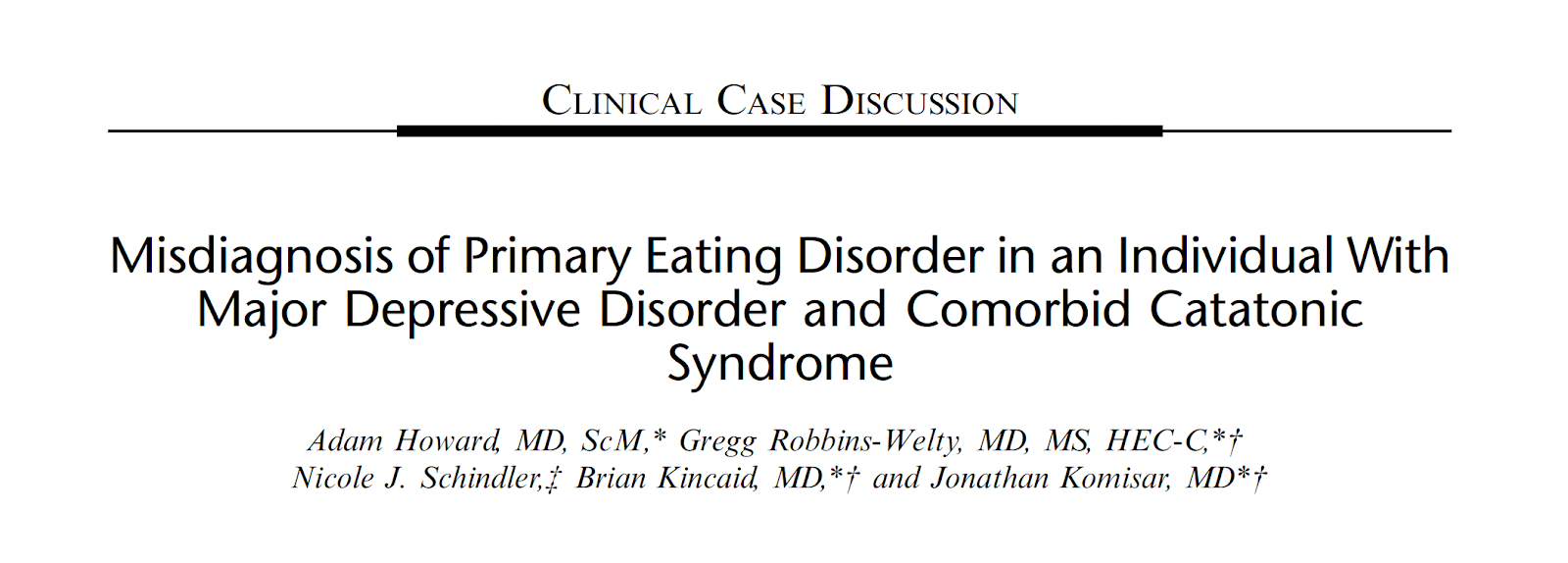Out on PubMed, from clinicians at Duke, is this case report: Misdiagnosis of Primary Eating Disorder in an Individual With Major Depressive Disorder and Comorbid Catatonic Syndrome. Howard A, Robbins-Welty G, Schindler NJ, Kincaid B, Komisar J. J Psychiatr Pract. 2024 Nov 1;30(6):447-448. doi: 10.1097/PRA.0000000000000825. PMID: 39655974 The abstract is copied below: Catatonia is a neuropsychiatric syndrome affecting movement, emotion, speech, and behavior, which commonly occurs secondary to medical or psychiatric disorders and with comorbid illnesses. We report the case of an 18-year-old male with a history of depression, anxiety, attention-deficit/hyperactivity disorder, polysubstance use, and previous suicide attempts who presented to the hospital from a residential eating disorders treatment facility, due to psychomotor slowing. The patient scored 3 or lower on the Bush-Francis Catatonia Rating Scale (BFCRS), but he showed marked improvement following 2 mg of intravenou...











